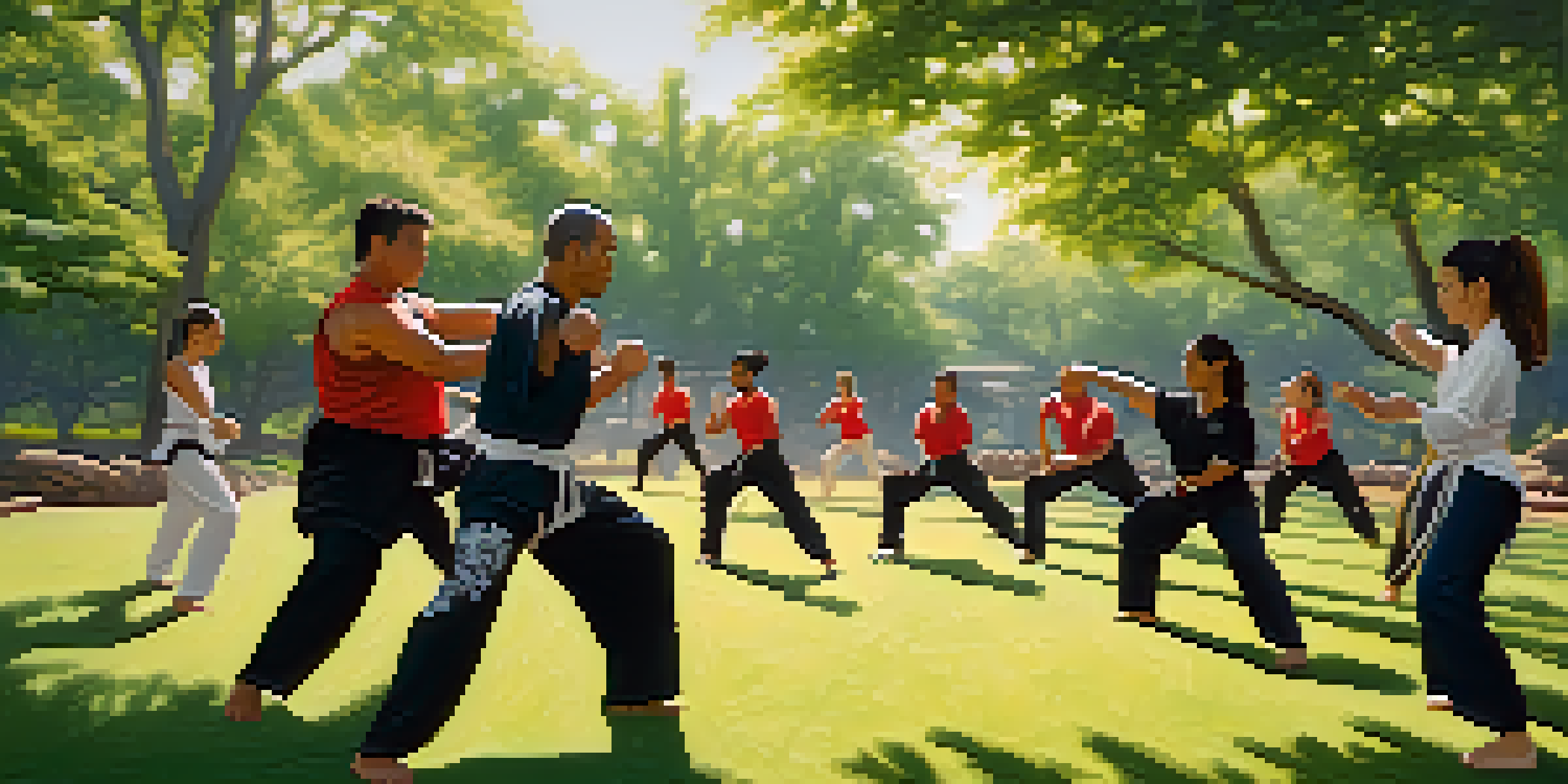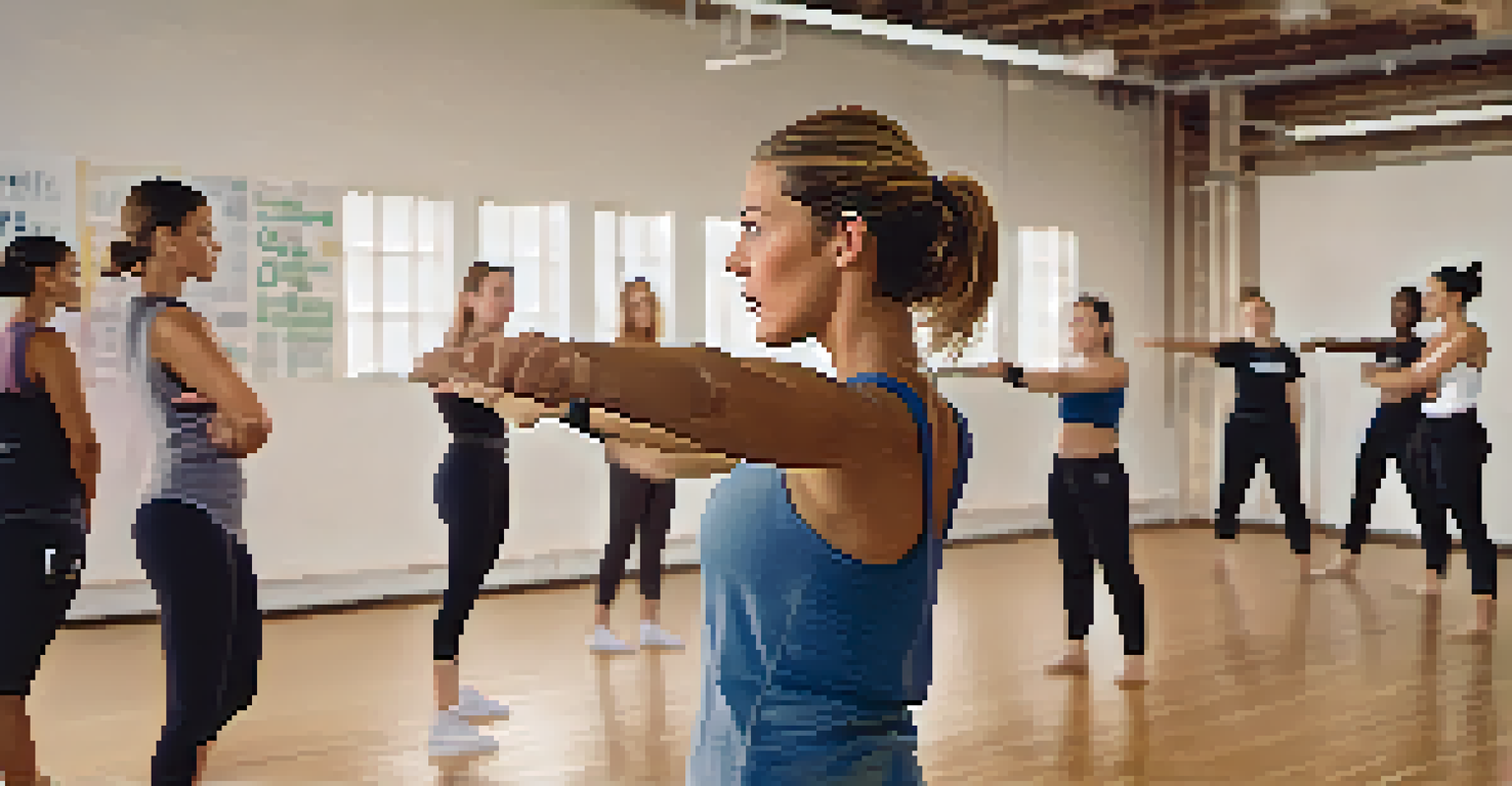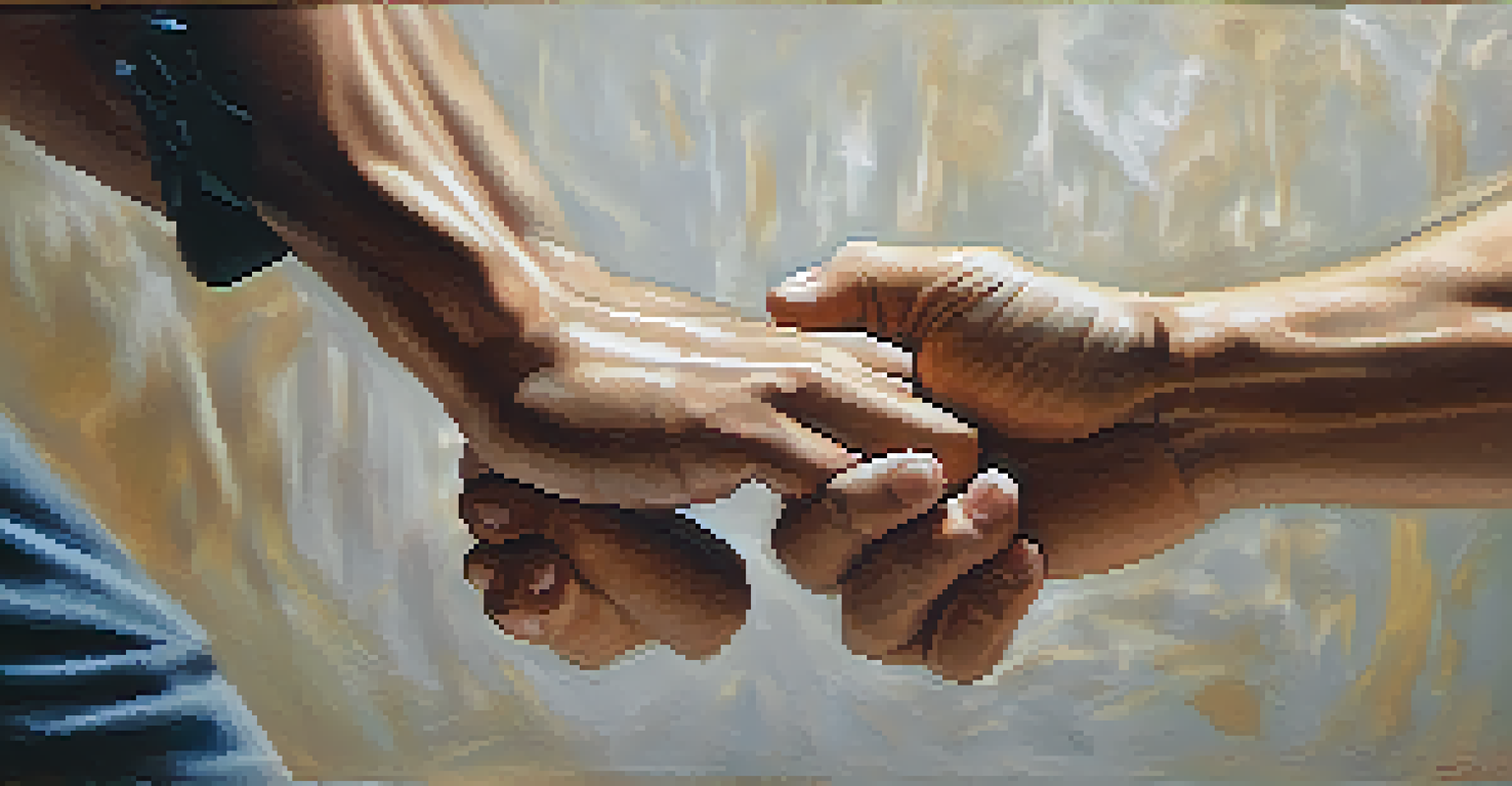Cultural Backgrounds and Their Influence on Self Defense

Understanding Cultural Context in Self Defense
Cultural background plays a significant role in how individuals perceive and practice self-defense. In many cultures, self-defense techniques are influenced by historical practices and societal norms, shaping responses to threats. For instance, a community with a strong martial arts tradition may emphasize physical techniques, while others may focus on de-escalation strategies.
Self-defense is not just a physical act; it's a reflection of the culture and values we hold.
This context not only affects the techniques taught but also the mindset surrounding conflict. In cultures where harmony is prioritized, individuals may be more inclined to resolve conflicts verbally rather than physically. Understanding these cultural nuances is essential for effective self-defense training that resonates with diverse populations.
Moreover, recognizing the cultural context enables instructors to tailor their teachings to meet the needs and expectations of their students. This customization not only enhances learning but also builds trust between instructors and students, leading to more effective self-defense practices.
Historical Influences on Self Defense Techniques
The historical backdrop of a culture can greatly impact its self-defense techniques. For example, in countries with a history of martial arts, such as Japan or Brazil, self-defense may be intertwined with cultural heritage and philosophy. Here, practitioners often learn not just the physical moves but also the principles behind them, such as respect and discipline.

Conversely, in cultures with a history of conflict or oppression, self-defense might be approached with urgency and a focus on survival. This urgency can lead to the development of practical, straightforward techniques that prioritize effectiveness over tradition. Understanding these historical influences helps to appreciate why certain techniques resonate more in specific cultural contexts.
Cultural Context Shapes Self-Defense
Understanding cultural backgrounds is crucial for tailoring self-defense training to resonate with diverse populations.
By studying these historical influences, individuals can better understand their own self-defense practices and how they align with their cultural identity. This connection can foster a deeper commitment to learning and applying self-defense techniques in real-life situations.
Gender Roles and Self Defense Across Cultures
Gender roles significantly influence self-defense training and practices within various cultures. In some societies, traditional views may dictate that men take on a more aggressive role in self-defense, while women may be encouraged to use avoidance or de-escalation techniques. This disparity can affect the types of training women receive and their confidence in self-defense scenarios.
In a world where cultural diversity is a reality, understanding each other's backgrounds is essential for effective self-defense training.
However, many cultures are evolving, embracing more inclusive approaches to self-defense. Programs specifically designed for women, for example, teach assertiveness and practical techniques that empower them to defend themselves effectively. These shifts reflect changing societal attitudes and a growing recognition of the need for equitable self-defense training.
It's also important to consider intersectionality, as experiences can differ based on race, ethnicity, and socio-economic status. By acknowledging these complexities, self-defense training can become more effective and relevant, helping individuals from all backgrounds feel empowered and prepared.
The Role of Community in Self Defense Education
Community plays a crucial role in shaping self-defense education, often reflecting the values and norms of the culture. In tight-knit communities, self-defense may be approached as a collective responsibility, where members support each other in learning and practicing techniques. This communal approach can foster a sense of safety and solidarity among individuals.
Conversely, in more individualistic cultures, self-defense may be seen as a personal responsibility, leading to a focus on individual skills and techniques. This difference highlights the importance of adapting self-defense training to fit the community's values, ensuring that it resonates with participants and addresses their specific needs.
Historical Influences on Techniques
The historical context of a culture significantly impacts its self-defense techniques, blending tradition with practical application.
Moreover, community involvement can enhance the effectiveness of self-defense programs through peer support and shared experiences. By creating a supportive environment, individuals are more likely to engage fully in training and internalize the techniques taught.
Cultural Attitudes Towards Violence and Self Defense
Cultural attitudes towards violence can significantly influence how self-defense is perceived and practiced. In cultures where violence is stigmatized, individuals may shy away from physical self-defense techniques, viewing them as aggressive or unnecessary. This can lead to a preference for non-violent conflict resolution methods.
On the other hand, cultures that have normalized or valorized violence may encourage more aggressive self-defense approaches. In such environments, individuals might be more inclined to adopt combative techniques, viewing self-defense as a means of empowerment. Understanding these attitudes helps to tailor self-defense training to align with participants' values and beliefs.
Ultimately, bridging the gap between these cultural attitudes and practical self-defense training is essential. By fostering open discussions about violence and its implications, instructors can create an environment that encourages thoughtful engagement with self-defense techniques.
Adaptation of Self Defense Techniques in Multicultural Environments
In multicultural environments, adapting self-defense techniques to accommodate diverse backgrounds is vital for effective training. Instructors must recognize that students may come from various cultural contexts, each bringing unique perspectives and experiences. This diversity can enrich the training process, providing a broader understanding of self-defense.
For instance, incorporating elements from different martial arts styles can create a more inclusive curriculum that resonates with a wider audience. This not only enhances the learning experience but also fosters respect for different cultural practices and beliefs surrounding self-defense.
Community's Role in Self-Defense
Community involvement enhances self-defense education by fostering support and solidarity among participants.
Moreover, creating an inclusive training environment encourages collaboration and shared learning among students. By embracing multicultural perspectives, self-defense training can become more relevant and effective for everyone involved.
The Future of Self Defense in a Globalized World
As the world becomes increasingly globalized, the future of self-defense practices will likely evolve to reflect diverse cultural influences. This globalization presents both challenges and opportunities for self-defense training, as instructors navigate varying cultural norms and expectations. The key will be finding a balance that honors individual backgrounds while promoting effective self-defense techniques.
Additionally, the rise of technology and social media can enhance the spread of self-defense knowledge across cultures. Online platforms can facilitate cross-cultural exchanges, allowing individuals to learn from diverse self-defense practices and techniques. This can lead to a richer understanding of self-defense that transcends cultural boundaries.

Ultimately, the future of self-defense will depend on our ability to adapt and learn from one another. Embracing cultural diversity can lead to more effective and holistic self-defense practices that empower individuals from all walks of life.